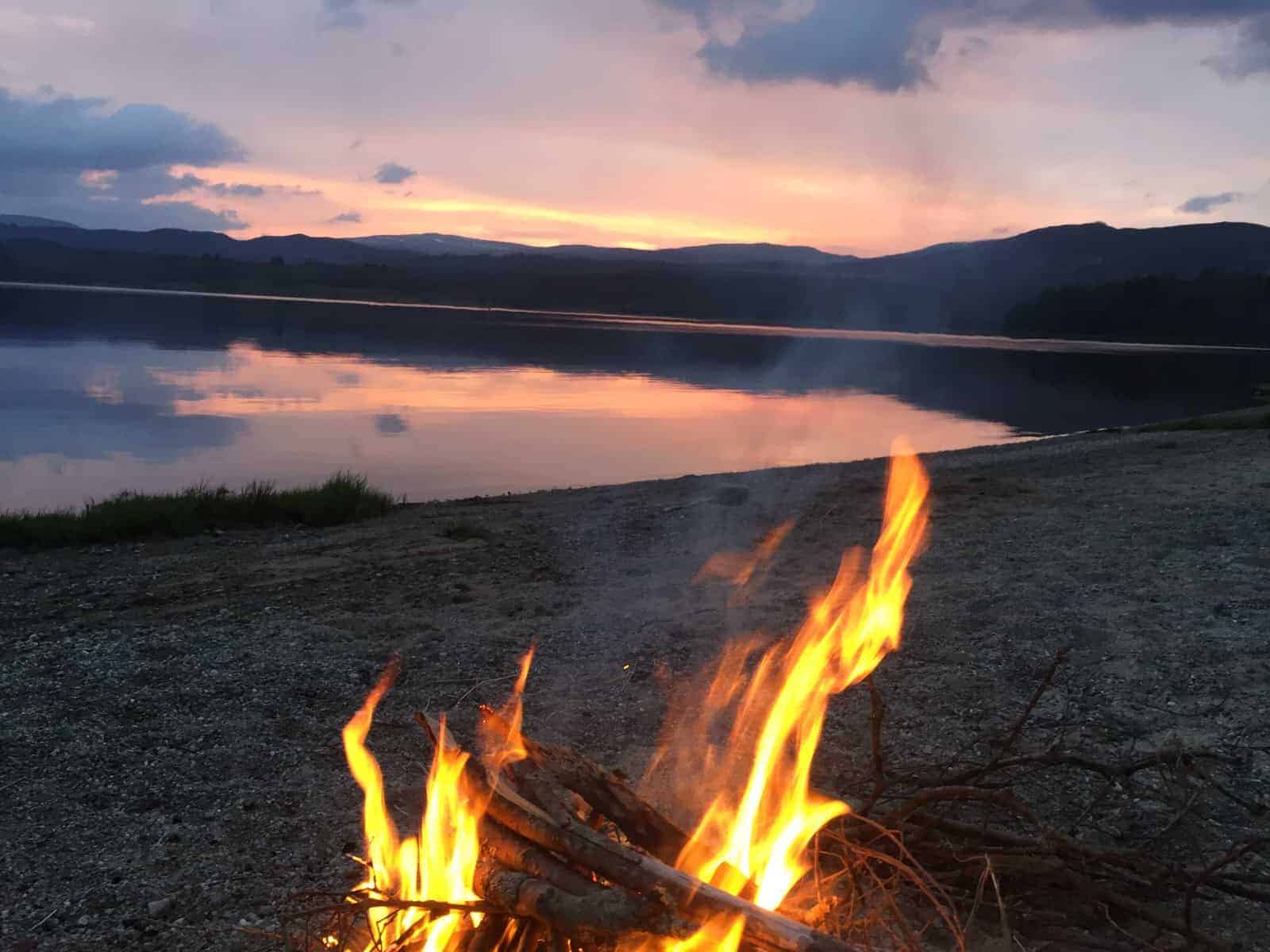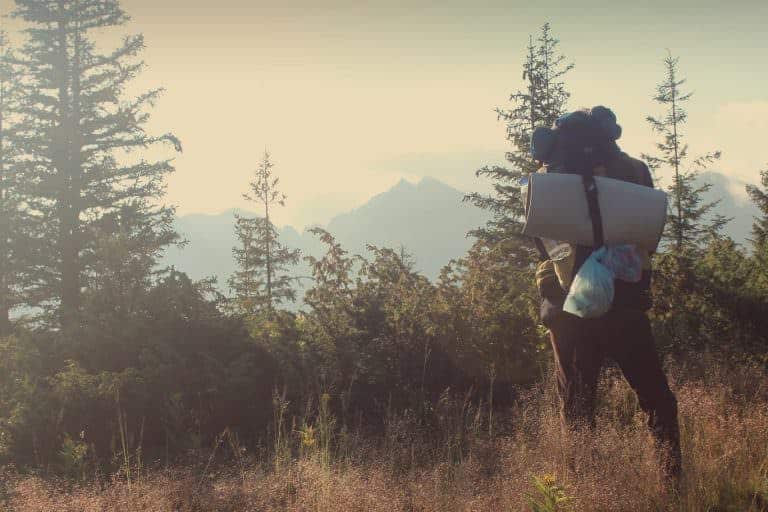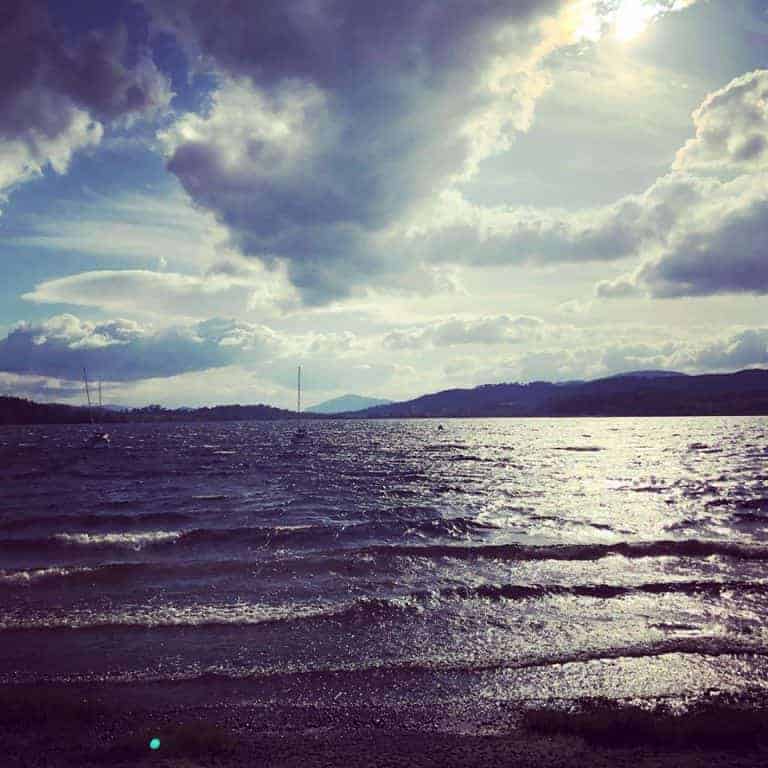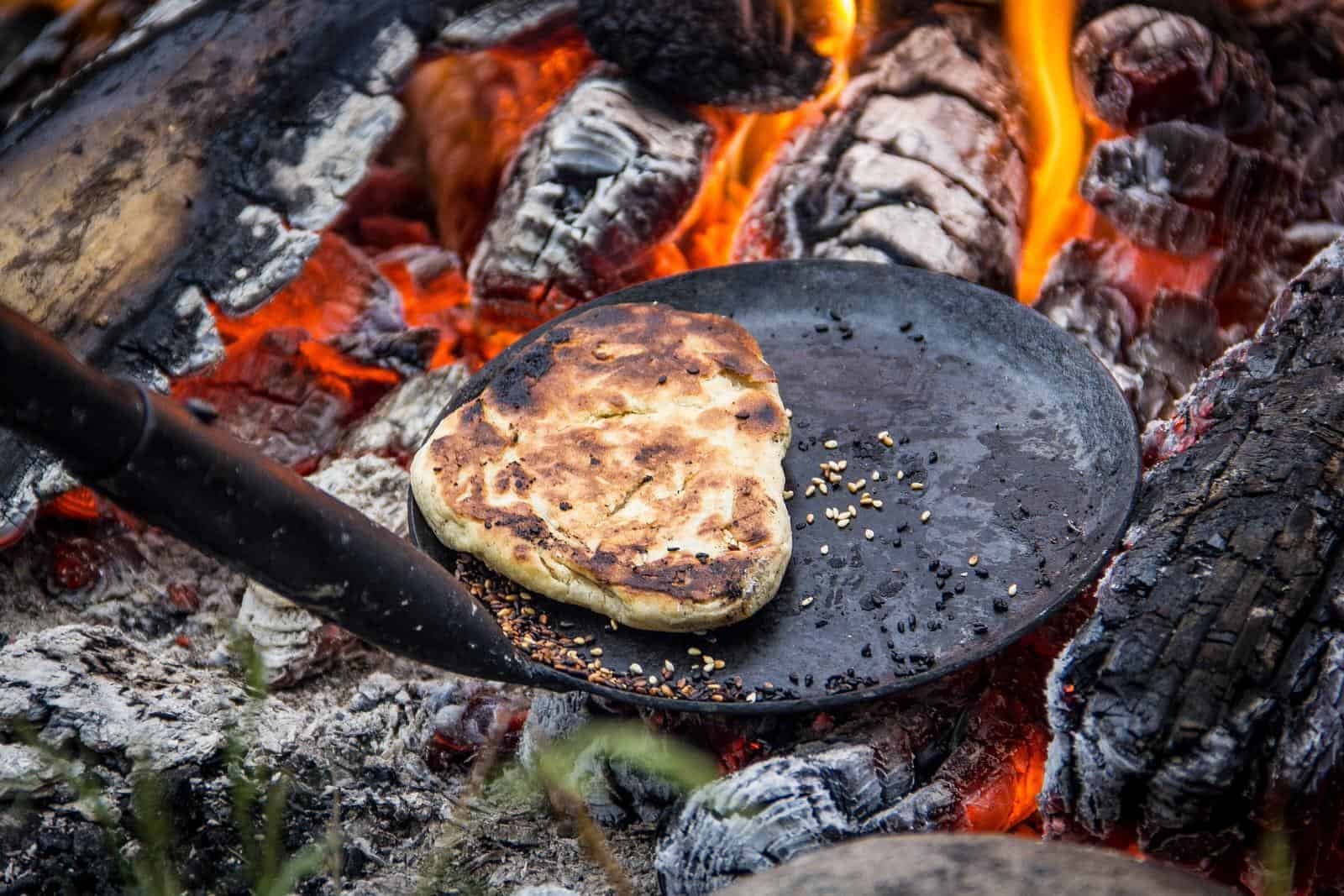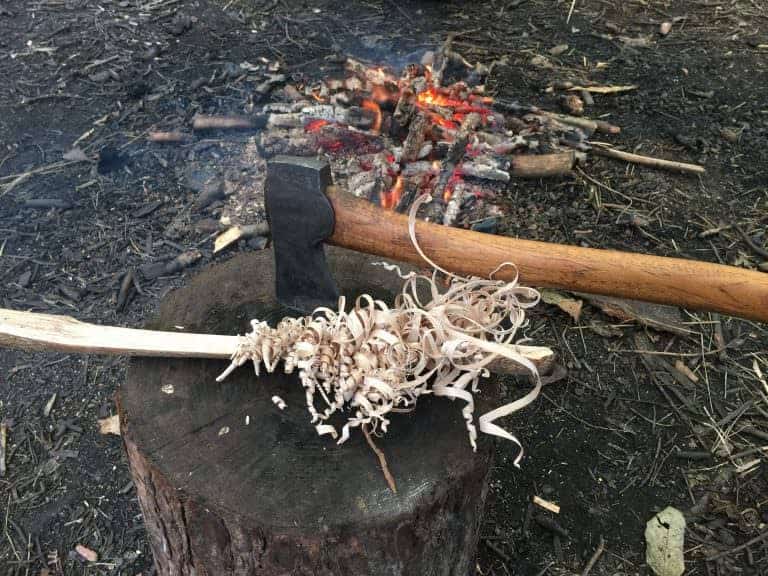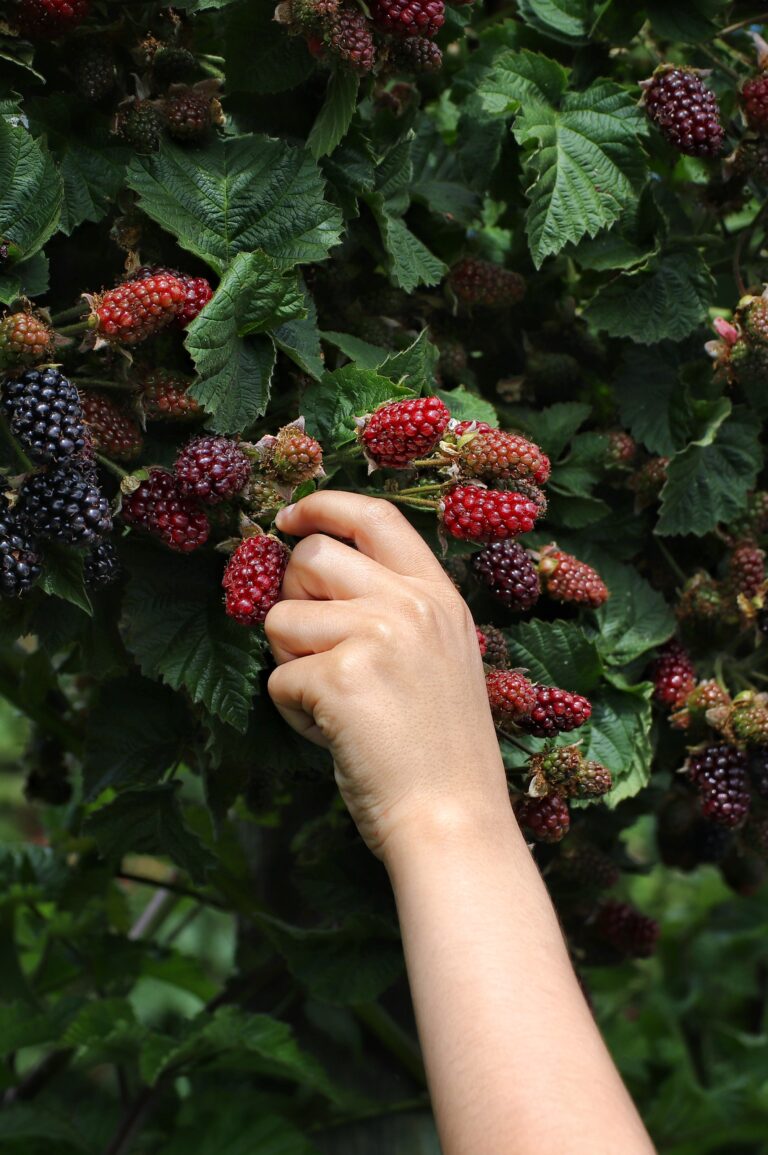Lighting a Fire in Wind and Rain: Tips, Tricks and Cotton Wool
Over the next four weeks, we will be looking at fires, fire lighting methods, materials, and tips. In this week’s blog, we’re taking a look at fire lighting in the wind and rain. We’ll talk through what you can do to prepare before leaving home, show you how to make feather sticks and teach you how to use a fire steel and birch bark to get your fire going.
We’re not going to be looking at friction fire lighting this week – but keep checking back in as we’ll be teaching you all about friction fire lighting and bow drills later in the month.
Remember, you can read the whole blog or skip to the sections that interest you using the links below:
- A quick recap – fire lighting safety and the law
- Fire lighting begins with preparation
- Learn how to light a fire using a firesteel and birch back
- Preparing your fire
- How to light a stove in the wind and rain
Before we look at how to light fires in the wind and rain, here’s a quick recap of what you should know when fire lighting in the UK.
A quick recap – fire lighting in the UK – safety and the law
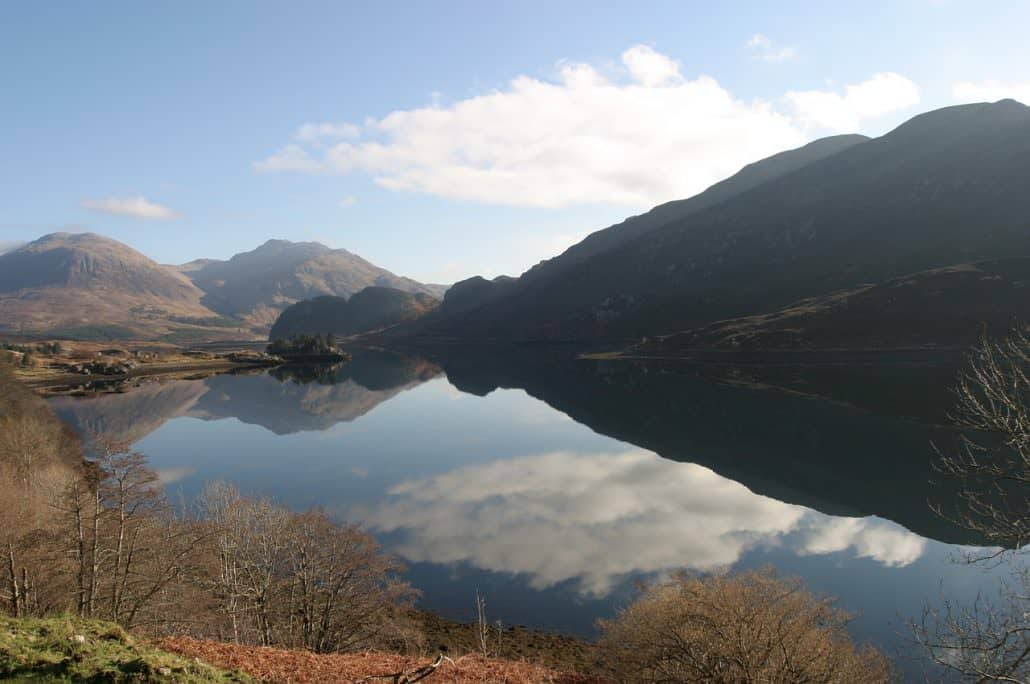
Remember, whenever you’re practicing bushcraft or camping in the UK you need to abide by the bylaws of the area.
Fire lighting and the law – England, Wales, Northern Ireland
In England, Wales and Northern Ireland you must have the landowner’s permission before lighting a fire.
Fire lighting and the law – Scotland
In Scotland, the outdoor access code states, “wherever possible, use a stove rather than light an open fire. If you do wish to light an open fire, keep it small, under control, and supervised – fires that get out of control can cause major damage, for which you might be liable. Never light an open fire during prolonged dry periods or in areas such as forests, woods, farmland, peaty ground or near to buildings or in cultural heritage sites where damage can be easily caused. Heed all advice at times of high risk. Remove all traces of an open fire before you leave.”
However, it is not just the law that needs to be taken into consideration when fire lighting.
Fire lighting – be wary of the conditions
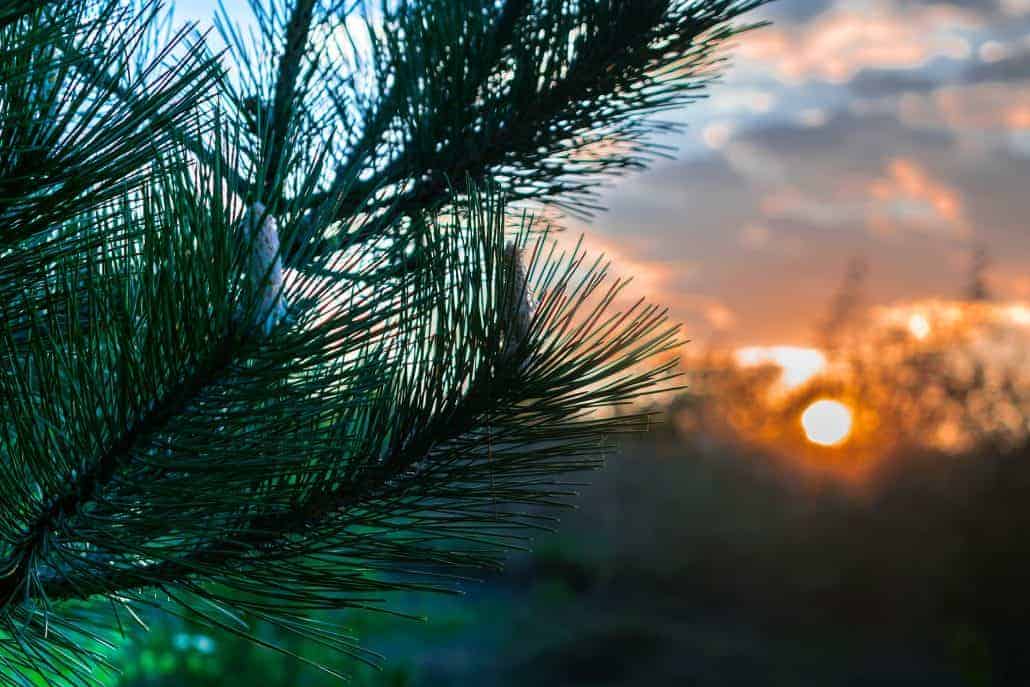
Assuming that you’ve satisfied the above criteria then be mindful of your surroundings; note if the ground and surrounding area is particularly dry or going through a period of drought. Also look out for the potential of root fires. These are accidental fires caused by setting alight to shallow root systems – doing so can easily cause a fire to rapidly spread – this is a particular case with coniferous trees. We will talk more about location and preparation later on but try to clear the ground under where you’re about to have a fire, if the ground is peaty (such as on Dartmoor) then don’t light a fire at all – it has the potential to smolder underground and transform into a forest fire. Elevate your fire off the ground if at all possible and look out for any low-hanging branches above your fire which could ignite.
Fire lighting begins with preparation
The key to successful fire lighting, as with most things in life, is preparation. In this next section, we’re going to look at a few things that you can prepare to help you light a fire in the wind and rain.
Preparing your fire lighting kit before your trip
Picture the scene, you went out walking the weather didn’t hold out and it has poured down. You had a great time but now you’re wet, your kit is wet and everything around you is wet. Luckily the rain has stopped and you’re back at your campsite (where you have the landowner’s permission to light a fire) and you’re keen to get the campfire roaring, dry out and start cooking your food. Here are some items that you can prepare at home to help you make this process much simpler.
Remember, preparation is not just about kit – practice these techniques and using this kit while in an ideal environment and you will be better prepared to use them in adverse conditions.
Tinder Boxes
Tinder boxes have a long and rich history. Flint and iron pyrites were used throughout Europe since pre-history. The famous Otzi or Tyrolean Iceman, a well preserved natural mummy thought to date from around 3500 BCE, was found carrying fungus (for tinder) and iron pyrites. Later, as we passed through the iron age, basic firesteels came to replace the iron pyrites. Tinder boxes, which were used domestically as well as out on the trail, continued to be in common usage until the 18th century.
Preparing your tinderbox
Here are some key considerations when preparing your tinderbox. Remember to choose a tin, look for the type that used to be considered an old cigarette tin. Make sure that it has a tight seal and will fit easily in your backpack. Remember, it is always worth carrying more than one method of fire lighting – consider taking matches (in a waterproof container), a firesteel and a cigarette lighter.
Producing sparks using a fire steel
A tinderbox should consist of a method of producing sparks and something to catch the sparks – e.g. tinder.
By far the best tool for producing sparks (in our opinion) is the LightMyFire Swedish firesteel – these can be picked up on Amazon for under a tenner. These firesteels, and many others, typically comes with a striker. If not you can fashion your own – part of an old hacksaw blade will work well. If you’ve a carbon steel knife then you can also use the back of this knife to strike your firesteel.
Catching sparks – natural materials
If natural materials are easy to hand then be sure to add them to your tinderbox before you set off. If not, be sure to keep an eye out for them as you journey towards your campsite. Some of the best tinders are dry grass, dead bracken and even bits of old birds’ nests (it should go without saying that you should only ever use empty birds’ nests – ideally those that have fallen to the ground). Other tinders include shavings from woods such as cedar bark, clematis bark and of course – every bushcraft person’s best friend – birch bark.
Learn how to light a fire using a fire steel and birch back
Watch our video here or click play on the video below.
Catching sparks – other options
There are a few other things that you can put in your tinderbox to help you light a fire in the rain and wind. One of the favourites of which is cotton wool balls and Vaseline. Buy cotton wool pads and a small metal tin of vaseline (the type that you can use to treat chapped lips). If these are being stored in with natural tinder then it is best to prepare them at camp, however, if you wish to carry a separate tin for vaseline and cotton wool balls then you can prepare them before you leave the house. In order to prepare your cotton wool balls pull the cotton wool apart (to access the soft wool itself), then smear liberal doses of vaseline on the cotton wool; roll these into balls and you’re ready to go. These will easily ignite when showered with sparks from your fire steel.
Preparing your kit – matches
Matches are an easy and quick way of starting a fire. Choose strike anywhere matches (e.g. not the safety ones) when heading out into the woods. One of the best ways of keeping them dry is to remove the striking strip from the packet of matches, cut it into a circle and glue it to the inside of an old film canister (admittedly these are getting harder to find!) stick the matches inside the canister and seal it tight. For a belt and braces approach you can then put this canister in a zip-lock bag. It can be a good idea to carry several such canisters in different places – for example in your jacket pocket, side pocket and if there’s room in your tinderbox.
Practice makes perfect
Remember, practice these techniques in as many conditions as you can while close to home – even if it’s just going out in the back garden. After all, practice makes perfect and you don’t want to be learning while you’re struggling to light a fire.
Preparing your fire
For the purposes of this next section, we’re going to divide the blog into two parts- lighting fires using sparks (including matches) in adverse weather and lighting stoves in the same conditions.
Preparing your fire: location
When it comes to lighting a fire in the wind and rain then the location is key. As we covered in our blog organisation in bushcraft, you should look for an area that is close to the materials that you will need for your fire. In addition, be sure to avoid shallow root systems and low hanging branches. In an ideal situation, you would also place your fire within relatively easy reach of a source of water. Look for natural surroundings, such as rocks which could act as a shelter from the rain.
A note on rocks – if you’re placing your fire close to or on rocks then avoid flint and those that have been saturated with water (such as rocks from a riverbed) as these are likely to explode if they get too hot.
Preparing your fire: materials
When gathering materials for your fire in wet weather you may need to go slightly further afield from your immediate area to find kindling that is suitable. Look around for kindling which may be drier, though being sheltered from the elements.
Feathersticks
One of the best tools for lighting a fire in adverse conditions are feathersticks. Being able to make these is a key skill which will serve you well in most conditions. Watch our video below to learn how to make feathersticks.
Learn how to carve feather sticks – watch our video here
Kindling
When attempting to light a fire in wet and/or windy conditions it is worth doubling, or even trebling, up the amount of kindling that you would normally use to light a fire. Only add more wood when you see flames coming through the previous layer. If the wind/rain is particularly strong then it can be worth building a temporary canopy using materials to hand over the top of your fire.
How to light a stove in the wind and rain
Lighting a gas or a meth stove in the wind and rain has some principles in common with lighting a fire in the same conditions. Look for natural features which can act as a shelter for your stove or try to construct a windbreak around it. If using rocks for the purposes of creating this windshield then avoid those that have been submerged in water or flint, as both of these are likely to explode if exposed to heat for a consistent amount of time – though this is a smaller risk with gas stoves than it is with fire.
If great care is taken then your stove can be used in the awning space of your tent – though obviously this is a fire risk and is not recommended by the manufacturer.
Tips for striking matches
Striking a match in the wind and rain is certainly a skill. Though it may be common practice to strike the match away from you when lighting candles and the like, it is better in bushcraft to strike towards you. This will allow you to cup your hands around the match and protect it from the wind. Hold the match vertically, fire after all burns upwards, and then guide it carefully towards the flame.

